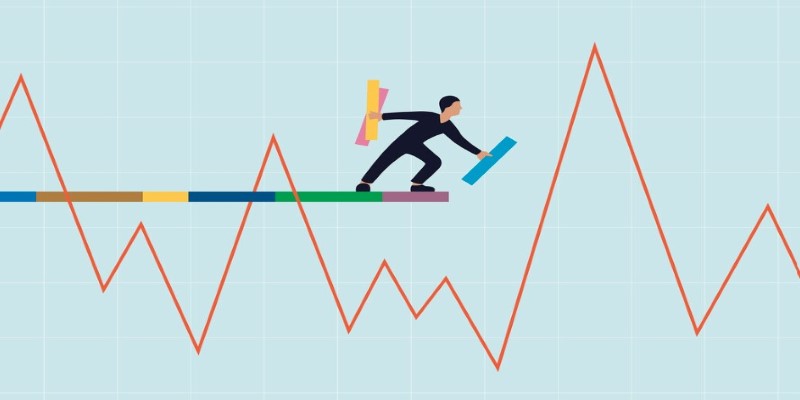The mortgage application process may at times appear very complex and this is especially so for first time homeowners. Knowledge of the procedures and ensuring that you are ready to face the process makes the journey easier and get a home loan. Starting from the evaluation of your financial status, all the way to collecting the necessary documents, every step should be approached with great caution. Selecting the right lending company, applying for pre-approval, and applying for the actual loan are some of the most important factors that you need to consider. Its about time to become aware of these aspects and proceed with the mortgage application and come closer to the accomplishment of the dream of homeownership. In the following part of this guide, you will find the basic steps of getting a home loan.

It is always advisable to begin the mortgage application with a clean bill of your financial health before applying. This include understanding credit scores, debt/income ratio and savings for down payment and other cost of closing. Good credit standing means that you can get a better deal on the interest rate charged on the loan while a low D/E ratio is an assurance to the lenders that the monthly installments on the mortgage can be easily met. Also, having a proper money saving strategy means that one is in a right position to cater for the cost that may be involved in the purchase of a house. Assessing your finances will enable you know how much you are capable of repaying hence the amount you wish to borrow.
As you prepare for a mortgage, you should ensure you have the following documents; Some of the details that will be required from you by the lenders include your income, asset and employment details; hence bring along your recent pay slips, W2s, tax returns, and bank statements. In case you are a freelancer, you might be required to provide some extra papers, for example, profit and loss statements and 1099 forms. It is also advisable to provide other valuable documentation in case you need to prove other sources of income or own investment, retirement annuities, etc. It is also an added advantage to have these documents well arranged and ready in order to apply and show lenders that you are a responsible borrower.
Choosing the right lender is one of the important steps that has to be taken while applying for a home loan. There is a need to do comparison and analysis in order to arrive at the best lender that one should go for. This shall also depend on the interest rate, loan amount, charges, as well as the level of service delivery. Lenders may also have certain loan products for first timers in the property market or for any particular circumstances. Further, ask friends or relatives, or real estate agents who may have borrowed from the firm in the past and, read the reviews that customers have posted on the internet. It is therefore advisable to spend some good time in selecting the right lender so as to get better mortgage terms and a better experience.
Pre-qualification for a mortgage is an important step that makes you fully aware of your budget for a mortgage. Before the approval of the loan, the lender is likely to conduct a check on your credit score, income, and other assets that you have. Pre approval not only provides an accurate estimate of the amount of money that one is likely to be approved for but also position one nicely as a serious buyer when making offer on a home. Sellers love buyers who are pre-approved because it means the former has the financial capacity to buy the asset. This step forms the basis of the home buying process to be successful.
After selecting a particular lender and obtaining all the relevant paperwork, you are now prepared to apply for a home loan. This entails submitting to the lender, all relevant data relating to your financial status, source of income, and the property you intend to offer as security. After submission, the lender will start the evaluation of your application with a view of proceeding with the disbursement of the loan.

Underwriting is the final stage in the mortgage application process when the lender analyses all your financial data to determine your creditworthiness. In underwriting, the lender confirms your income, assets, liabilities, and credit score. They may also ask for more documents or some clarification to some parts of your financial statement. The underwriter primary objective is to make sure that you qualify for the loan and that the loan is a good investment for the lender. This step may take several days to weeks depending on how demanding your application is, the operation of your browser as well as the operating system and the response from all parties.
The home appraisal is carried out with a view of ascertaining the fair market price of the home you intend to buy. The lender decides to order the appraisal so that if the borrower defaults, the amount of loan given does not exceed the value of the property. A licensed appraiser assesses the home in relation to its state, location and other similar homes sold in the same area. In the event where the appraisal is below the purchase price, then the buyer will have to negotiate with the seller or make a larger down payment. The appraisal is the final determinant that gives the final approval of the loan.
When underwriting and appraisal are done, the last approval is given by the lender in form of a clear to close, suggesting that all conditions have been met and the lender is ready for the closing. This is the last stage before you can be said to own the house of your dream.
The Closing Disclosure is a substantially more detailed form that states all the terms of the loan, the loan amount, the interest rate, the monthly payments and closing costs. You will get this document on or before three days to the closing date to allow you to go through it carefully. For this reason, one should compare Closing Disclosure with the Loan Estimate in order to see if the terms have changed. Be very careful when it comes to closing costs and other charges and fees involved in the process of closing a deal. To avoid such issues, always consult your lender if you have any issues or observe something that looks odd before signing the papers.
The closing meeting is the last session of the mortgage process, and it involves signing all the papers that will seal the deal of the house. At the closing you will be asked to sign the mortgage note, deed of trust and other legal papers. You will also be expected to pay any other closing costs that include the down payment and the title insurance fees. The final documents include all the documents that were signed before the funds had been transferred and you get the keys to your new home. The final meeting is usually held in a title company or an attorneys office or an escrow office, and the final step puts you in the legal right to own the house.
It is never easy when applying for a mortgage, but if you know how the process works, then it becomes easier to get a home. The preparation of your financial records and the final process of signing on the dotted line are all significant in the process of getting a mortgage. There are various pros and cons that can be associated with car loans; however, by choosing the right lender, going through the pre-approval process, and being attentive throughout the process, then there are no Cons to buying cars on an installment basis. Reaching the end of the mortgage process and signing the papers to finally own a house is a very fulfilling moment in every persons life and the end product of the whole process.

By Vicky Louisa/Sep 04, 2024
By Martina Wlison/Sep 04, 2024

By Elena Davis/Sep 04, 2024

By Pamela Andrew/Sep 04, 2024

By Mason Garvey/Oct 13, 2024

By Sid Leonard/Aug 26, 2024

By Verna Wesley/Sep 03, 2024

By Rick Novak/Jul 13, 2024

By Alison Perry/Sep 04, 2024

By Kelly Walker/Jun 14, 2024

By Kristina Cappetta/Oct 03, 2024

By Darnell Malan/Sep 04, 2024